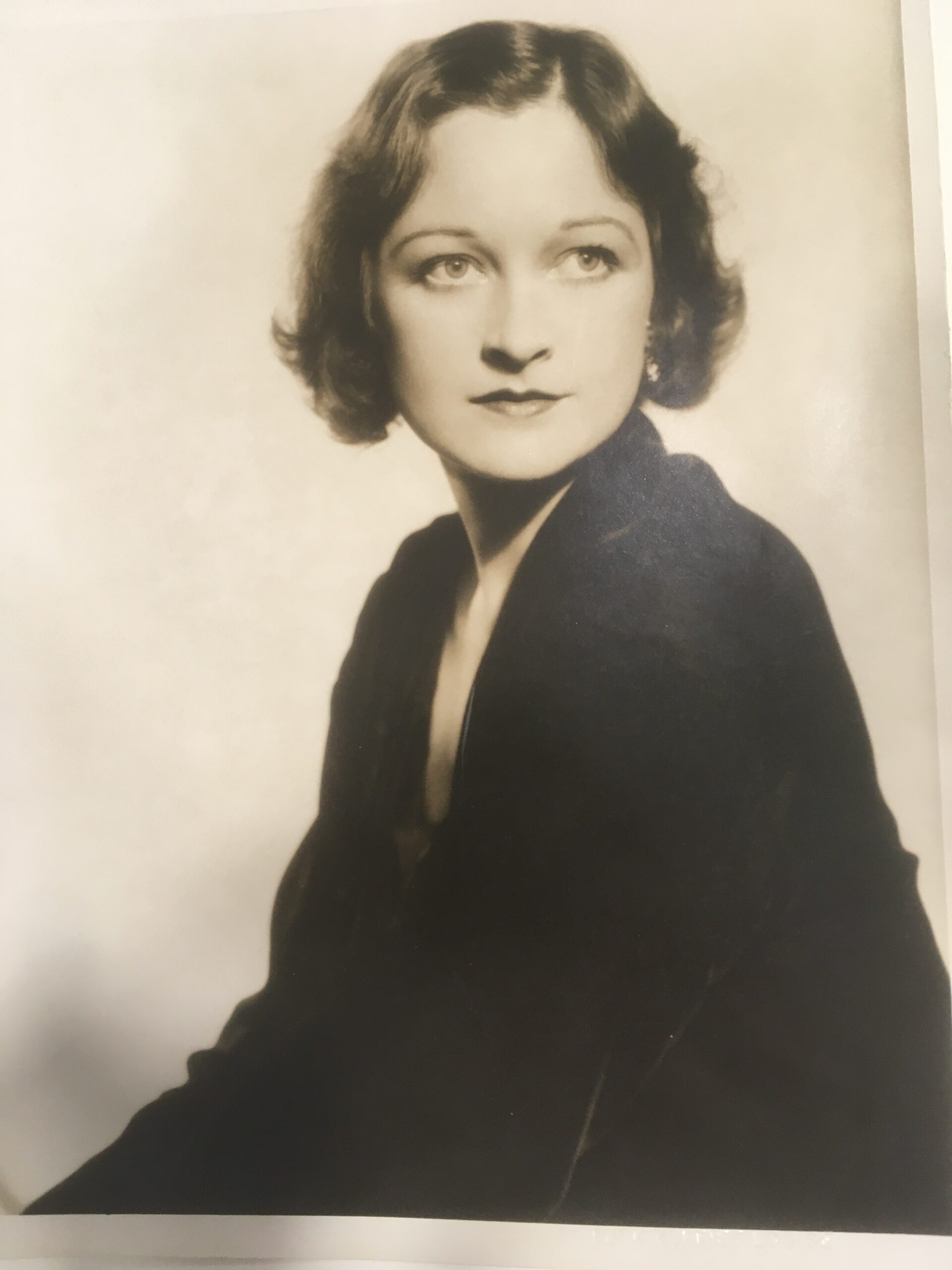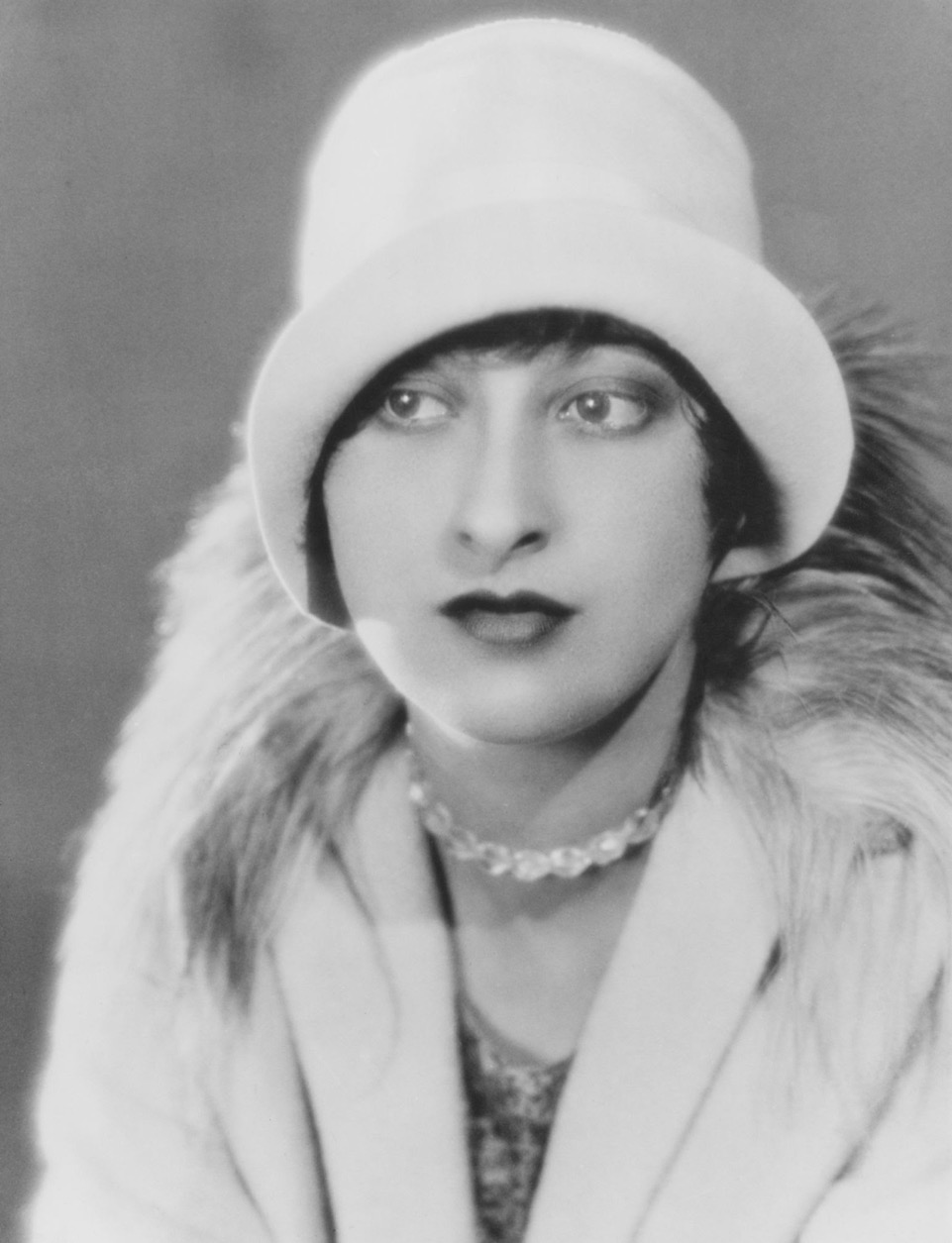Eleanor Boardman by Ruth Harriet Louise, courtesy of the Hundred Heroines Collection
Ruth Harriet Louise (1903-1940)
First woman photographer to run the Metro-Goldwyn-Mayer portrait studio.
Born Ruth Goldstein on 13th January 1903 to British and Hungarian parents, Ruth’s life was filled with creative people well before she moved to Hollywood: her brother was Hollywood film director, writer, and producer Mark Sandrich; their mother, Karla Jacobsen Sandrich Goldstein, was a painter; and Ruth and Mark were also cousin to silent film actress Carmel Myers.
Growing up in New Jersey, Ruth started out as a portrait photographer for her Rabbi father, taking portraits of her father’s congregation. By 1922, she had set up her own studio which was a block away from her father’s place of work.
Although her mother encouraged her to study fine art, Ruth was determined to pursue photography. Like her brother Mark, Ruth was interested in the science that went into creating images with this still fairly new artistic medium. Her talent for creating compositions, and skill in chiaroscuro learned from her fine art background, was more suited to photography. Conversely, Mark’s career in film and photography came from studying engineering and working in a studio props department.
In 1925, Ruth moved across the country to Los Angeles to further her career. This was an intelligent decision on her part because opportunities for photographers on the East Coast were declining, due to cultural interests shifting from theatre and Broadway to Hollywood and the silver screen. By this time, Ruth’s new studio was among 30 others in Hollywood. It was here that she was given the freedom to develop her personal style.
Ruth’s artistic signature incorporated elements of art movements from the early 20th Century. These included Cubism, German Expressionism and Futurism. Her works predominantly capture full-body shots of actors to bring a focus to the costumes and setting, rather than just the face. She then cropped the images to make headshots as required. The popular glamour shots of the time aimed to represent a star’s most notable feature: their face. However, Ruth often treated her subjects as if they were part of the whole creative process instead of just models in front of a camera.
Her style also went against the grain of conventional headshots. This is because Ruth mainly used diffused lighting to give her portraits a romantic feel, which added a sense of beauty and glamour to her work. Her background in fine art was particularly beneficial when shooting portraits for Hollywood screen couples: by applying some sensitivity to her methods, Ruth’s use of chiaroscuro and complex backgrounds gave the portraits a sense of wistful tenderness and romanticism. She also took the initiative to play music for each sitter and carefully selected records that would help her subjects feel more at ease. This meant that the sitters looked relaxed and candid, making Ruth’s portraits more compelling than those of her contemporaries.
The niche in the market that Ruth had created from her unique style was only part of the reason for her success in Hollywood. As an aspiring artist in her 20s, there is no doubt that there were several hurdles and prejudices she had to face. This is because Hollywood in the 1920s was a very male-dominated industry and the most successful women in show business were already household names by their teens. Despite studio bosses being rather radical for the time and hiring young women as scriptwriters and leading ladies, working behind the camera was a more difficult sector for a woman to break into. Luckily, Ruth had an advantage; her family connections guaranteed her a way of getting her foot in the door.
Ruth’s gained her first professional experience of shooting Hollywood stars when her cousin, Carmel Myers, offered to sit for her. This was a major boost for Ruth’s portfolio. Shortly after, Ruth headed West in pursuit of her Hollywood career. During her first few months there, Ruth took advantage of her connections for a second time: she moved in with her brother, Mark, who had been living there since 1923.
It was Ruth’s relation to Carmel that arguably landed her the role of Chief Photographer for MGM studios. This is because Carmel was good friends with Louis B. Mayer, a film producer at MGM. He understood the importance of publicity and was keenly interested in how the studio promoted their stars through the use of photography. Mayer had seen Ruth’s portraits of her cousin and sent actress Paulette Duval to Ruth’s studio to also have her portrait taken. Despite Duval not being impressed by Ruth’s youthfulness and lack of experience, Mayer offered Ruth an interview which resulted in her being the first woman photographer to obtain a five-year contract with MGM. As a historical achievement, Ruth’s role would become more important than she could have imagined. The rise in celebrity culture was an additional reason for studios to consider how their stars were depicted, and reinforced by Mayer, it would become a principal concern for Ruth and her portraiture.
During her time at MGM, Ruth built a rapport with several Hollywood stars such as Greta Garbo and Joan Crawford. She would be the exclusive portrait photographer for Garbo and created an extensive portfolio with Crawford when she was a young and aspiring actress; Crawford became Ruth’s most photographed subject by 1928. Sadly, Ruth’s contract with MGM ended in 1929 and George Hurrell replaced her as Chief Photographer. The development of sound and ‘talkies’ in the late 1920s had influenced actor’s attitudes towards how they wished to be photographed. They wanted their portraits to be sexier, which Hurrell was able to provide.
By the 1930s, Hollywood started to move towards a controlled assembly line system of film production and the corporate studio system was born. Prior to this, studios had welcomed women’s creative contributions. However, this new monopoly of film production forced women out of work, allowing businessmen to have more creative control and resulting in the industry becoming more hostile to women employees. Unions were soon formed, but Ruth refused to join any. She continued to work as a freelance photographer until 1932. Ruth would spend the rest of her life devoted to her husband, film director Leon Jacobsen, and their children. The family would experience tragedy when their son died in 1938, at the age of 6. Ruth and her husband also had a daughter in 1936, but Ruth sadly passed away from complications during childbirth with her third child in 1940, aged 37.
13th January 1903 – 12th October 1940
By Chloe Munro













